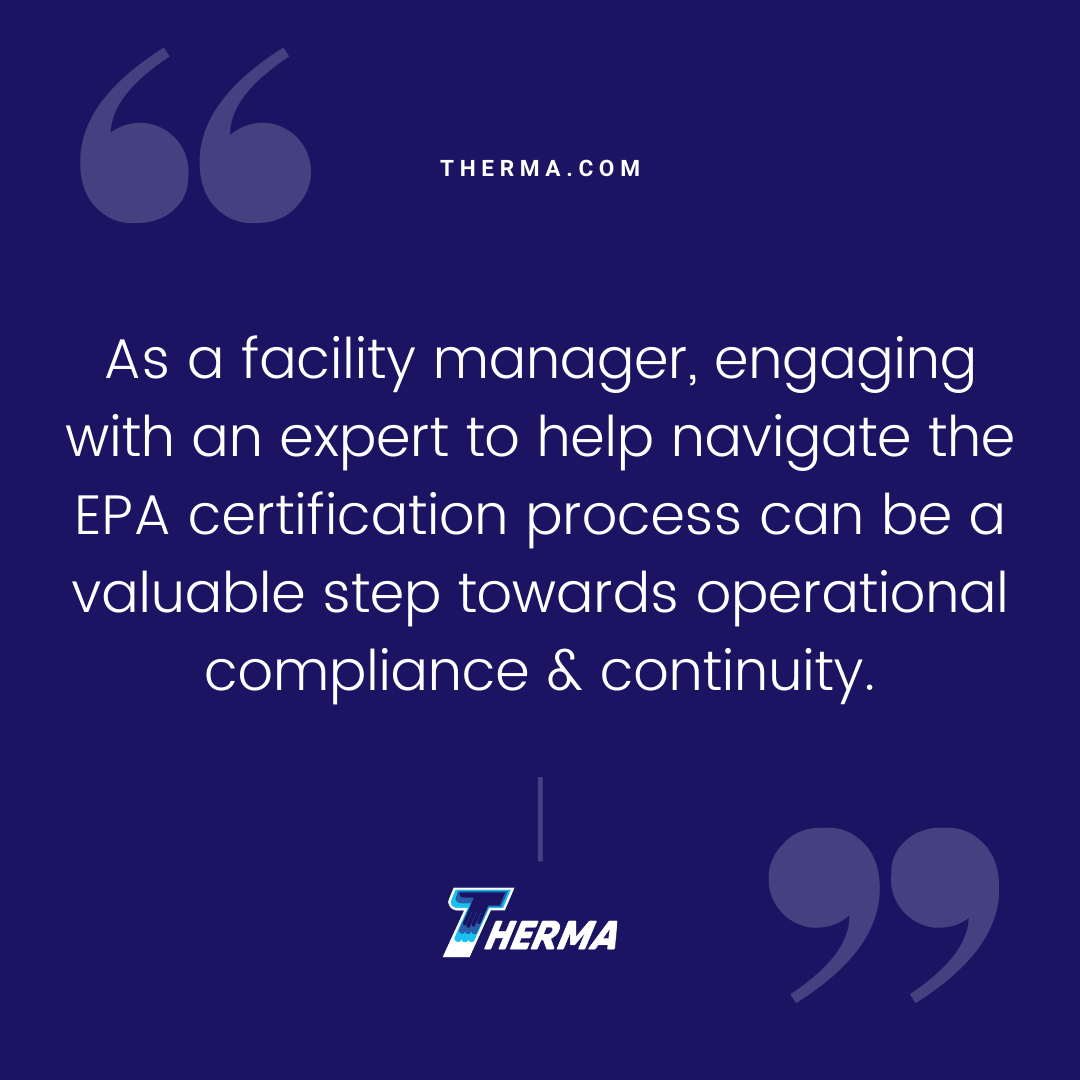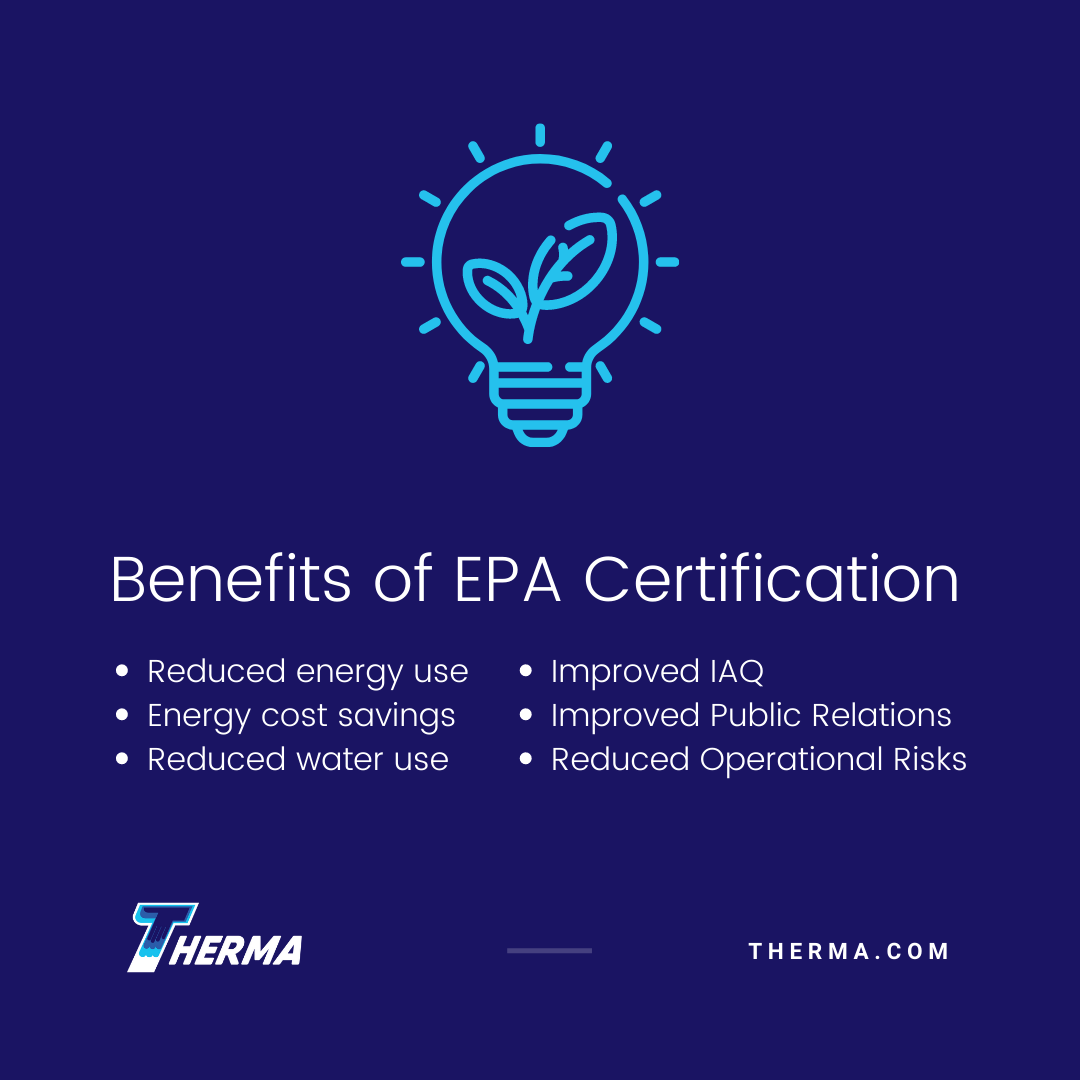by Ali Kriscenski
The US Environmental Protection Agency (EPA) is an independent government agency that focuses on activities to protect human and environmental health. The EPA manages certification programs that provide guidance to facilities whose activities may affect the environment, such as chemical processing or hazardous waste. These programs provide a way for companies to demonstrate compliance with environmental laws and regulations and mitigate risks related to operational activities.
Since its founding in 1970, the EPA has grown within a complex, ever-changing global environmental context. In today’s business world, environmental compliance is a top priority to avoid fines, shutdowns, or even legal entanglements. With the right approach, your facility can achieve EPA certification and have assurance that its operations are within regulatory parameters.
What Is EPA Certification?
EPA Certification demonstrates that a company is in compliance with the regulations and laws that apply to its operations. The type of industry determines which regulations are applicable and which environmental issues are covered. Industries can include agriculture, manufacturing, oil and gas, and construction, among others, and regulations can relate to water, air, or chemicals. The compliance to relevant regulations is verified by a federal, state, or local agency that is authorized by the EPA’S Office of Enforcement and Compliance Assurance (OECA).
Who Can Benefit From EPA Certification?
Nearly all facilities can benefit from sustainability measures like EPA certification. In fact, their rules and regulations affect operations of a wide range of industries, including biopharmaceutical, commercial and health care facilities and even data centers.
Pharmaceutical and Manufacturing Facilities
In addition to having complex HVAC systems, biopharmaceutical and manufacturing facilities often also depend on intricate waste-management systems. The effluents that are by-products of research, development and production can be hazardous to human health and the environment, should they enter the air or water supply. EPA guidelines apply to fermentation products, extraction products, chemical synthesis products, mixing/compounding processes and research processes.
As a facility manager, engaging with an expert to help navigate the EPA certification process can be a valuable step towards operational compliance and continuity. The certification helps your facility understand and adhere to measures that are meant to manage “point-source” pollutants. In this way, certification helps prevent your facility not be a direct source of pollution and avoids the business risks involved.
EPA Certification benefits biopharmaceutical companies by providing a blueprint for how to integrate best practices into facility design and operations. As facilities with a wide range of regulatory standards to manage, including from OSHA, CDC, FDA, and others, biopharmaceutical facilities can utilize EPA Certification as an operational standard to guide staff and management through the measures that ensure compliance.
Commercial Facilities
As research around refrigerants revealed their effects on the environment, a focus on environmental regulations for HVAC systems and materials yielded stricter guidelines. This has also been influenced by studies on carbon emissions and the creation of new industry standards that relate to international agreements. These regulations trickle down to all types of businesses and facilities throughout local and global economies.
Both residential and commercial HVAC systems must follow certain practices to stay in compliance with all applicable laws and regulations. HVAC technicians, facility managers and other facility personnel are tasked with ensuring that systems operate in a manner that’s both environmentally safe and energy efficient. The current pandemic has created further protocols and recommendations to help reduce the spread of airborne contaminants in commercial settings. By following the standards of EPA certification, your facility is able to provide better indoor air quality (IAQ) for employees, reduce environmental impacts and create an assurance of operational compliance.
Commercial facilities are also a source of carbon emissions and high energy use. In recent years, the uptake of green building practices has started to become engrained in municipal and state regulatory standards. EPA Certification provides a way for commercial facilities to meet a wide array of regulations that relate to emissions, water use, and energy use proving compliance through ongoing verification.
Healthcare Buildings
Like the biopharmaceutical industry, healthcare buildings have to manage regulatory compliance to a wide range of agencies like OSHA and the FDA. Hazardous waste, medical waste, and water discharge are also daily activities that fall under regulatory standards. EPA Certification helps healthcare facilities navigate the regulations that fall under the EPA’s federal guidelines. As part of operational standards, this demonstration of compliance allows these types of faciities to ensure their health focused activities aren’t breaking any laws.

Data Centers
The rise of the digital era has increased the prevalence of data centers. Our society’s dependence on readily available digital information requires complex data systems that can require significant amounts of energy to run. This places data centers under regulations that apply to energy use and emissions. EPA Certification allows these types of facilities to reduce their energy usage, demonstrate regulatory compliance, and avoid any fines or periods of shutdown.
Benefits of EPA Certification
Across all types of industries there are common benefits to be found through EPA Certification. The regulations are intended to protect natural resources and public health, and in following the guidelines companies are implementing best practices that can contribute to streamlined operations. The benefits can include:
- Reduced energy use
- Energy cost savings
- Reduced water use
- Improved indoor air quality (IAQ)
- Improved Public Relations
- Reduced Operational Risks
How To Get Started
Given the benefits of certification, it’s a worthwhile investment to select a dedicated point person from your facility to begin the process. This starts with identifying the types of systems and processes used in your facility, and then finding the corresponding agency, which may be the EPA or a local or state authority. The EPA maintains a list of certifications online where you can start the process and find the most up-to-date information.
Ali Kriscenski was trained in high-performance building design at Boston Architectural College. She has worked with leading architecture and construction firms in NYC and New England and served on the executive team at the Forest Stewardship Council International. She was the managing editor at Inhabitat and has worked pro bono for the Green Building Institute, ISEAL Alliance and Habitat for Humanity.
Sources
EPA – Ozone Protection Milestones of the Clean Air Act
HVAC Informed – What Technologies and Trends Will Define HVAC in 2021
BBC – Why Indoor Air Quality Matters to Our Bodies and Brains








